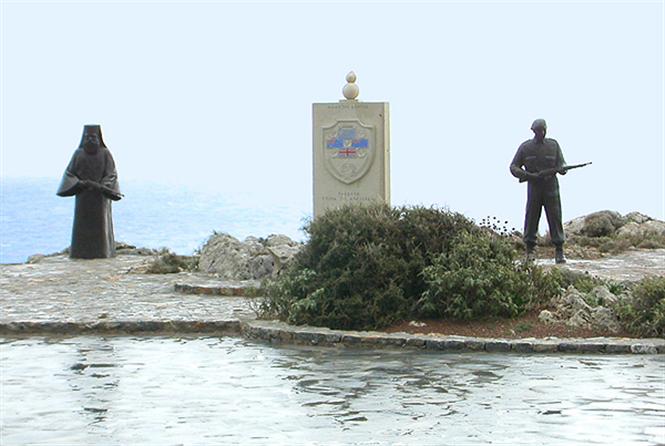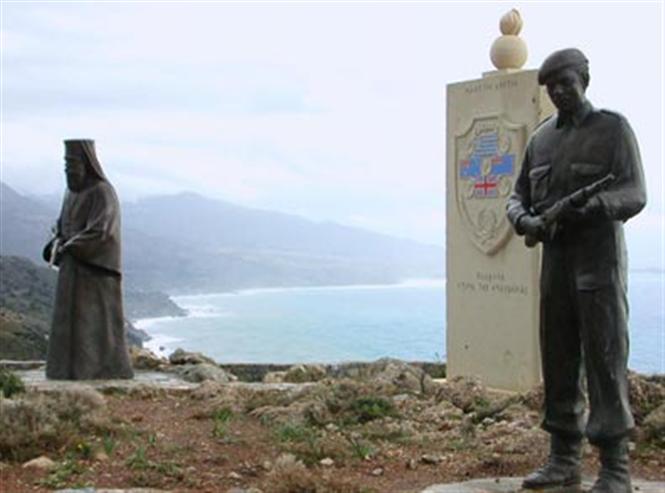Preveli Monastery Memorial
Description
The Memorial comprises of 2 sculptures and a headstone engraved with the flags of Greece, Australia, New Zealand and United Kingdom. The first sculpture shows the armed figure of Agathangelos Lagouvardos, the Abbot of the Preveli Monastery, in 1941 and the second, a soldier of the Allies.
History
The wish to erect a shrine in the land of the Holy Monastery of Preveli has been expressed in the past by the soldiers Tom Dunbabin and Geoff Edwards who fought in the Battle of Crete. The latter, who passed away on April 11 2000, was the main motivator of the action for the erection of this memorial.
From 20 May to 1 June 1941, Australian, British, New Zealand, Greek and German soldiers fought a savage battle for possession of the island of Crete. At first victory was uncertain and could have gone either way. German reinforcements tipped the scale, however, and the campaign swung against the British. The result was another evacuation by sea of defeated British soldiers, and the falling of yet another part of Europe to Adolf Hitler’s Nazi regime.
The origins of the Cretan campaign lay in the preceding battle for Greece. In one sense it was a logical step in the Nazi path of conquest, yet German planners also saw the island as strategically important. They feared that British planes operating from Crete’s airfields could bomb the oilfields at Ploesti in Rumania, which were the source of most of Germany’s petroleum.
Most of the British defenders on Crete were refugees from the failed Greek campaign. They arrived exhausted, with little equipment and weapons. However, while tired, they were not demoralised and were ready to face the Germans again.
On 20 May German paratroopers and glider-borne infantry landed at four points: the airfields at Maleme, Retimo and Heraklion and the British administrative area of Cannea-Suda. At first the defenders marvelled at the German’s boldness. For nearly all, this was the first time they had witnessed an airborne invasion. But as the sky filled with descending Germans, the defenders opened fire. Entire German units were consumed in a hail of bullets and bombs before or just after they reached the ground. A German company that floated down around Pirgos started the day with 126 men. Within two hours the defenders had accounted for 112.
The German assaults on Heraklion, Retimo and the Cannea-Suda area failed. The remaining paratroopers found themselves on the defensive, fighting for survival. At Maleme, many of the Germans met a similar fate. However, those who came down west of the airfield landed in an undefended area and arrived relatively unscathed. The struggle for Maleme became the focal point of the campaign. Despite heavy losses the New Zealanders of the 22nd Battalion stoically threw back desperate German attacks. As darkness fell they still held the airfield.
(Source AWM)
Further information at: http://www.awm.gov.au/exhibitions/lookingback/
Construction Information
The Architect Chryssoula Stavrianoudaki designed the Memorial which was constructed by Mrs Stavrianoudaki and local technicians.
Location
Preveli, Greece.
The land used for the memorial is an open and flat site, high above the beach on the road to Preveli Monastery and 1.8 kms from the monastery itself.


